Knowing Stakeholders' Needs

Knowing stakeholders' needs is a key element when developing products, services, and websites. When someone owns a product or service, the benefits could be increased with minor tweaks or additions; it can often be challenging to get them on board with any changes.
When you have a new startup or product in mind, one of the first things you need to do is identify who will use it. While understanding everybody's needs is important, knowing what has been tried and failed for a certain product or service can make an enormous difference.
How to understand stakeholders' needs?
To have an effective communication strategy, you need to understand what your stakeholders need from you. Look at all the things your stakeholders are involved in (the places they go, try to find out more about their interests and hobbies.) This will help you choose how you want to communicate with them. Here's how you can understand stakeholders' needs!
- Understand how your product affects stakeholders
The first step to understanding how your product may affect stakeholders' needs is to do some market research. Ultimately, this is going to be done by observing and asking questions. It may be feasible to do surveys or interviews to understand your stakeholder's needs better. This can be a helpful tool if you are soliciting feedback from stakeholders, especially when you have a limited budget.
- Identify Your Target Audience
Once you have finished doing market research, you must identify your target audience. Through stakeholder analysis, identify the unique needs of this group. You can also use a customer decision tree or some other tool that helps you distinguish your profile's needs from others. If you create a new product, you also need to determine how the product will impact other parties.
- Know what the specific problems are!
Once you have determined how the prospects using your product or service will be impacted, you must know the specific problems. It is important to note that not all problems are adverse. For example, your new product may address an existing problem or create a new opportunity. After you have a good idea of the problems, brainstorm solutions to these problems.
- Evaluate Potential Solutions
The next step is to evaluate the potential solutions you have come up with. This will help you prioritize them. If a solution has a high impact, consider it the most important solution. If a key has low impact, move it down on your list.
When using these solutions, you may encounter barriers that stand in your progress. The best way to overcome them is to have a contingency plan. You should also evaluate the return on investment of all potential solutions and select the best one for your project.
- Develop Your Solution
After analyzing your problem, develop a solution that will address it most effectively. Know the critical factors that need to be addressed by your answer. The solution may be updated or changed as the project progresses. New problems may also arise, so you will need to address that.
- Present Your Solution
If you have done your job right and have developed a solution that meets your stakeholders' needs, then present it to them. They will likely give you feedback after they have had some time to think about it. Sometimes they may have no idea what they need, so you will have to discuss and educate them.
- Engage in Continuous Improvement
Once you have given stakeholders their solution, the project is not over. You must address feedback and work on updating your solution. Once the initial product development stage is complete, you should develop a plan for continuous improvement. This will help you update the product or service and maintain stakeholder satisfaction over time.
Why do knowing stakeholders' needs matter?
Despite the many benefits that the internet can bring to a business, many well-intentioned business owners do not consider what their clients want and how that can affect their bottom line. The internet can be a very important asset to a company when run properly, but it must be used effectively to work for the company. What should one do?
Several things should always be considered when engaging in creating anything on the Internet:
1) Understanding your audience or users is paramount
Explanation: If you do not know what your users or audience want, you won't be able to create the product they are looking for. If you cannot define what they want, how can you cater to their needs? By having a clearly defined understanding of your audience and how they will use your product, you will be able to cater to their needs and make them happy.
2) What is the function of the product you are creating?
Explanation: It is important that any product created serves a specific function. You need to ask yourself this question before you make a product. Are you creating an entertainment portal, a shopping portal, or would you like the create a social network? If the product meets the needs of your audience and if its purpose is clear, you will have no trouble getting it developed.
3) What are your expectations from your product?
Explanation: This question should come last because it will determine what your product will look like and how it will work. If you are expecting a significant profit, your product will need to be highly attractive and reliable. On the other hand, if you have no expectations or high expectations that cannot be met, your product will most likely fail.
The most important question to ask yourself while creating a product is: "Does it meet the needs of my users?" If the answer is yes and meets those needs, I believe that the rest of these questions do not apply. If it meets the needs of your users, then all the other questions are irrelevant.
4) Create a "persona" or "profile" that represents your ideal user.
Explanation: This character will help you understand your users better and help you create a product that is more personal to them. It will also help you create a more appealing product for the users.
5) Create an entire marketing plan for your user.
Explanation: The marketing plan helps you determine what type of advertising will be done and when it should be done. A well-designed marketing plan can make or break a product. If it does not have a well-planned marketing strategy, it will most likely fail.
6) Create a good logo, website, and message representing the product.
Explanation: This is even more important than creating a good marketing plan as it's the first thing that people will see when they look at your product. A well-designed logo will determine how your product is perceived. If it's terrible, you don't have much chance to have successful sales.
7) Test the product to ensure it's working correctly and meets your users' needs.
Explanation: Although it is not as important as understanding your user, you can test your product to ensure it's working properly before offering it for sale. This will also allow you to notice if there are some flaws in the product and fix them before going public.
8) Never underestimate the time and effort it will take to develop and launch your product.
Explanation: Like every other project, you must put a lot of hard work into your product. The last thing you want is to take your users' money and not deliver what you promised. The amount of time and effort you will have to put into it is directly proportional to the number of available resources.
9) Never underestimate the time and effort needed to train users to use your product.
Explanation: After you have developed a product and started launching it, you should train your users on how to use it. Even if you went through the process of creating it properly and it was well made, users will use your product differently than how you intended. This is critical because you don't want to spend time training users when they could be using your product instead.
10) Stick with the plan; if it's not working, you must change it and make it work.
Explanation: If there are problems, you must take action quickly. You need to stay focused on what you are doing and be determined to do whatever it takes to make it work. Once you find out what needs to be changed and you are ready to make it work, keep a positive attitude and get back to work.
11) If the product doesn't sell well, you must make changes and do more marketing.
Explanation: You must listen to what your users want. If they aren't satisfied with the product, you need to make changes and do more marketing to keep what you have left of your users.
12) Never give up on your product.
Explanation: If you continue to make changes and do more marketing, you will be able to bring your product back from the edge of destruction.
13) Never stop asking your users what they think of your product.
Explanation: While it is essential to listen to your users when you have a good understanding of your users and the product, you must ask them what they think of it. You need to know what is wrong with your product just so that you can fix it.
14) Test your product and then test it again before launching it.
Explanation: It is important that you test your product and then test it again to make sure that it works correctly and doesn't have any problems. You don't want to launch a product that will be full of bugs.
Explanation: The product needs to be consistent because users need to understand it. Consistency is critical for successful product launches. If you have created a car, you need to make sure that it runs smoothly and safely.
15) Create a marketing plan that allows the business to be profitable and enables the users to become repeat customers.
Explanation: There are many ways to make a product profitable that are not the same as what many people think. A good example is how a good pizza chain makes its money. They find a way to make their product more appealing and easier to use than the competition while ensuring they can still make profits.
16) Don't expect instant success.
Explanation: A quick success can do more harm than good. It can lead to complacency and give you a false sense of security. Instead, you should not expect instant success but focus on your target market and take it one step at a time.
17) If a product is a success, you must manage the amount of inventory to ensure that you don't go bankrupt.
Explanation: You must keep an eye on your finances and ensure enough money for proper inventory management. It's also important that you don't overstock the product and make a mistake that could lead to bankruptcy.
18) Don't be afraid to try new things.
Explanation: You need to keep trying new things for your product to develop. The more you try, the more you will learn.
Final Thoughts: Knowing Stakeholders' Needs
As a new entrepreneur, you need to understand your user and identify your stakeholders. First, you need to identify and ask other people what the product does for them. You also need to ask your users about their needs and desires so that you can truly understand what the product does for them.
You will learn to create a product that you know people need and want. As you can see, you must understand the needs of your users before you create a product that can be sold.
Getting to know your users will help you determine what they expect from products, and it will help create a successful product that can make money for your business. Lastly, you will have an effective planning strategy to avoid mistakes and make a profit.
Do you feel like you are struggling with putting "strategy" and "business growth concepts" in place that make a difference? Doing it all is overwhelming! Let’s have a honest discussion about your business and see if the Power of 10 can help you. Click “HERE” to have a great conversation with our team today.
Written and Published By The Strategic Advisor Board Team
C. 2017-2021 Strategic Advisor Board / M&C All Rights Reserved
www.strategicadvisorboard.com / info@strategicadvisorboard.com











